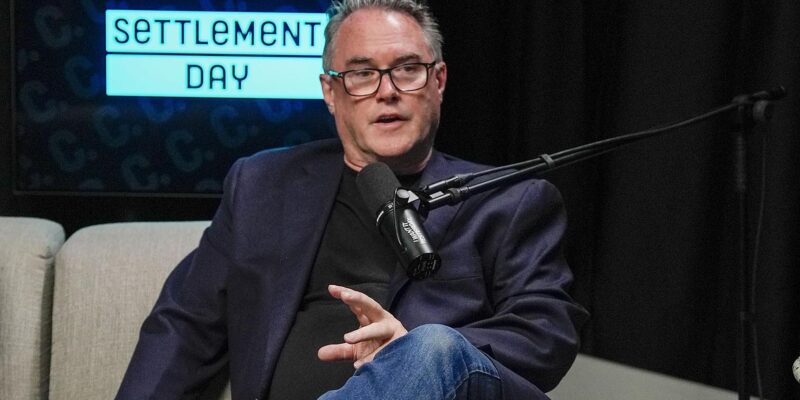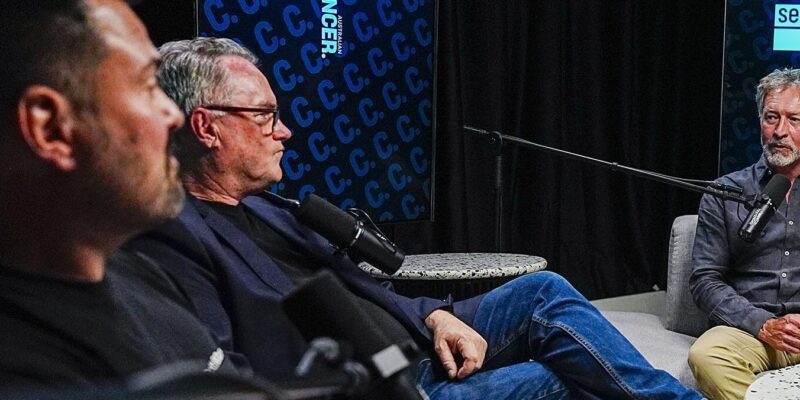Sticky inflation cruels chances of interest rate relief
Borrowers face the possibility of interest rates going up rather than down again after the Reserve Bank held steady following a spike in inflation.

THE Reserve Bank concedes it underestimated inflationary pressures in the economy as it left interest rates on hold and the case mounts for the next move to be up.
In a unanimous move that was widely predicted by economists and bonds traders, the central bank held the cash rate steady at 3.6 per cent on Tuesday.
Hopes of a Melbourne Cup Day cut was dashed after a shock surge in inflation reported last week.
Underlying inflation, which is the Reserve Bank’s preferred measure, jumped one per cent in the September quarter, which was materially higher than the bank’s forecasts, Governor Michele Bullock said.
https://platform.twitter.com/embed/Tweet.html?dnt=false&embedId=twitter-widget-1&features=eyJ0ZndfdGltZWxpbmVfbGlzdCI6eyJidWNrZXQiOltdLCJ2ZXJzaW9uIjpudWxsfSwidGZ3X2ZvbGxvd2VyX2NvdW50X3N1bnNldCI6eyJidWNrZXQiOnRydWUsInZlcnNpb24iOm51bGx9LCJ0ZndfdHdlZXRfZWRpdF9iYWNrZW5kIjp7ImJ1Y2tldCI6Im9uIiwidmVyc2lvbiI6bnVsbH0sInRmd19yZWZzcmNfc2Vzc2lvbiI6eyJidWNrZXQiOiJvbiIsInZlcnNpb24iOm51bGx9LCJ0ZndfZm9zbnJfc29mdF9pbnRlcnZlbnRpb25zX2VuYWJsZWQiOnsiYnVja2V0Ijoib24iLCJ2ZXJzaW9uIjpudWxsfSwidGZ3X21peGVkX21lZGlhXzE1ODk3Ijp7ImJ1Y2tldCI6InRyZWF0bWVudCIsInZlcnNpb24iOm51bGx9LCJ0ZndfZXhwZXJpbWVudHNfY29va2llX2V4cGlyYXRpb24iOnsiYnVja2V0IjoxMjA5NjAwLCJ2ZXJzaW9uIjpudWxsfSwidGZ3X3Nob3dfYmlyZHdhdGNoX3Bpdm90c19lbmFibGVkIjp7ImJ1Y2tldCI6Im9uIiwidmVyc2lvbiI6bnVsbH0sInRmd19kdXBsaWNhdGVfc2NyaWJlc190b19zZXR0aW5ncyI6eyJidWNrZXQiOiJvbiIsInZlcnNpb24iOm51bGx9LCJ0ZndfdXNlX3Byb2ZpbGVfaW1hZ2Vfc2hhcGVfZW5hYmxlZCI6eyJidWNrZXQiOiJvbiIsInZlcnNpb24iOm51bGx9LCJ0ZndfdmlkZW9faGxzX2R5bmFtaWNfbWFuaWZlc3RzXzE1MDgyIjp7ImJ1Y2tldCI6InRydWVfYml0cmF0ZSIsInZlcnNpb24iOm51bGx9LCJ0ZndfbGVnYWN5X3RpbWVsaW5lX3N1bnNldCI6eyJidWNrZXQiOnRydWUsInZlcnNpb24iOm51bGx9LCJ0ZndfdHdlZXRfZWRpdF9mcm9udGVuZCI6eyJidWNrZXQiOiJvbiIsInZlcnNpb24iOm51bGx9fQ%3D%3D&frame=false&hideCard=false&hideThread=false&id=1985561443106742772&lang=en&origin=https%3A%2F%2Fnewsroom.aap.com.au%2Fwire%3Fq%3Deconomy&sessionId=4343b27027589ecee36833a906205422ff9646a7&theme=light&widgetsVersion=2615f7e52b7e0%3A1702314776716&width=550px As that spike will continue to show up in data for the next 12 months, the RBA drastically revised up its inflation forecasts in its Statement on Monetary Policy, released alongside its cash rate call.
The bank expects underlying inflation to remain at 3.2 per cent until at least the middle of 2026, above the bank’s 2-3 per cent target band.
That all but rules out another cut for the next 12 months, HSBC chief economist Paul Bloxham said.
“On our assessment, the chance that the RBA will cut when core inflation is rising and above target is close to zero,” he said.
Although the bank’s forecasts assume one more cut by mid-2026, because RBA staff base their assumptions on market pricing, Ms Bullock said the next move would depend on how inflation data unfolded over coming quarters.”The board’s going to have to wait and see. And it’s possible that there’s no more rate cuts. It’s possible there’s some more,” she told reporters following the meeting.
Inflation is predicted to slowly return towards target from late 2026, with the RBA believing a recent price spike was largely driven by transitory factors such as international travel and one-off council rate rises.
But Mr Bloxham was more sceptical.
“Given that the core measures are supposed to strip out the volatility, and show the ‘pulse of inflation’, just assuming the upside surprise away seems risky,” he said.
“What if trimmed inflation does not ease as much as the RBA expects in Q4 2025, as the RBA’s forecasts imply? That would not just rule out cuts – but could imply that hikes could be needed.”The bank noted it was concerned by some sections of the economy where inflation was stickier, such as the rising cost of new dwellings and services.
In its statement accompanying the decision, the RBA board said it was uncertain about its assessment monetary policy was restrictive, meaning interest rates might not be dampening the economy as much as previously thought.
Uncertainties also surrounded its assumptions about how long it would take recent easing to take effect, the outlook for productivity growth and conditions in the labour market.
Although unemployment also spiked in September to 4.5 per cent, the RBA was sanguine about the jobs outlook.It forecast the jobless rate to hold at 4.4 per cent for the foreseeable future.
Treasurer Jim Chalmers said Australians were still under pressure, despite progress curbing inflation in recent years and the three rate cuts in 2025.
“I do acknowledge that many Australians would have wanted to see more rate relief at this meeting, but this decision was widely anticipated,” he said during parliamentary question time.
High government spending had driven up inflation, while unemployment was also up, shadow treasurer Ted O’Brien said.






